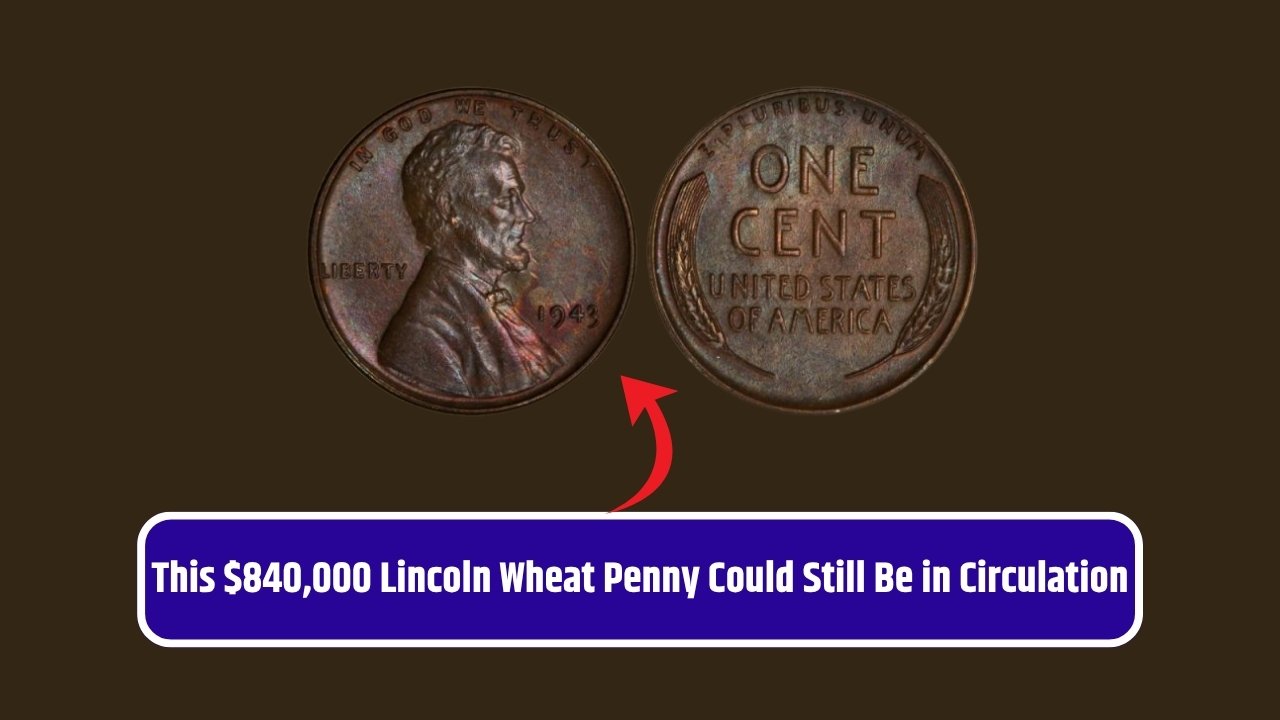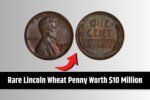Check Your Pocket Change: The world of rare coins holds many unexpected treasures, but few are as remarkable as the 1943-D Bronze Lincoln Cent. This isn’t just any penny—it’s a historical error worth nearly a million dollars. It may sound like a plot from a movie, but this coin is as real as it gets and incredibly rare. Let’s explore what makes this bronze-colored penny so valuable, how to identify a fake, and whether you might unknowingly own one.
Background
In 1943, the U.S. Mint made a significant shift in coin production. Due to the need for copper in World War II, the Mint stopped using it in pennies. Instead, they minted over a billion Lincoln cents using zinc-coated steel. These coins were shiny, silvery, and magnetic—completely different from the traditional copper pennies.
However, something unexpected happened at the Denver Mint.
A few leftover bronze (copper-based) planchets from 1942 found their way into the presses and were stamped with the 1943-D design. This error led to the creation of the 1943-D Bronze Penny, an accidental collector’s item with a potential fortune attached.
Rarity
How rare is this coin? Incredibly rare. Experts believe that only one or two genuine 1943-D Bronze Cents still exist today. It’s often considered one of the “holy grails” of coin collecting, and the fact that it was never meant to exist makes it even more appealing.
Here’s why it’s so special:
| Feature | Description |
|---|---|
| Year & Mint | 1943 with “D” mintmark (Denver) |
| Metal | Bronze (not steel) |
| Estimated Count | Fewer than 5 known |
| Market Value | Up to $840,000 (or more) |
Value
In 2021, one of these rare coins, graded MS64 (Mint State 64), sold for an astounding $840,000 at auction. Even coins in lower grades can fetch six figures, though they might not be in pristine condition.
Why is it so valuable? It’s simple: rarity and high demand. Collectors love error coins, and this one has everything they’re looking for.
How to Identify a 1943-D Bronze Penny
Wondering if the copper-colored penny in your collection is a 1943-D Bronze Cent? Here’s how to check:
Start with a magnet test:
- Does the penny stick to the magnet? If it does, it’s made of steel and not bronze—likely not the rare coin.
- Does it not stick? That could be a sign that it’s made of bronze.
But remember, some fakes are created by coating steel pennies with copper, so this test is just the first step.
Next, check the mint mark. Look beneath the 1943 date:
- It should feature a small “D” for Denver.
- If the mint mark is missing or there’s an “S” (for San Francisco), it’s not the correct coin.
To be sure, always have the coin professionally graded by a reputable service like PCGS or NGC. These services will verify the metal, weight, and die characteristics to confirm if the coin is genuine.
Fakes and Counterfeits
This coin has been a target for counterfeiters for years. They may take regular 1948-D pennies, alter the 8 into a 3, or coat steel pennies with copper to deceive collectors. Some of these fakes can look very convincing, so it’s important not to rely solely on your own judgment.
If you suspect your coin might be a genuine 1943-D Bronze Penny, don’t clean or alter it. Cleaning could diminish its value. Instead, send it to an expert for authentication.
Owning a genuine 1943-D Bronze Penny is akin to hitting the numismatic jackpot. It’s an accidental treasure with immense value and legendary status among collectors.
So, if you find a 1943 penny that doesn’t stick to a magnet and has a “D” mintmark, don’t spend it. Have it graded—you might be holding a valuable historical mistake.
FAQs
Q1: How many 1943-D Bronze Cents exist?
A1: Only one or two authentic 1943-D Bronze Cents are known to exist.
Q2: How can I test if my penny is bronze?
A2: You can use the magnet test. Bronze will not stick to a magnet, while steel will.
Q3: What is the value of a 1943-D Bronze Cent?
A3: One sold for $840,000 in 2021. Even coins in lower grades can be worth six figures.
Q4: Where is the mint mark on this coin?
A4: The mint mark, a small “D,” is located just below the 1943 date.
Q5: Can I clean the coin before grading?
A5: No, cleaning the coin can reduce its value. Leave the coin unaltered and send it for professional grading.




